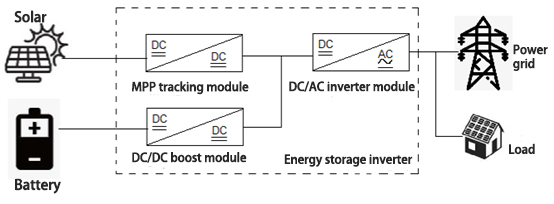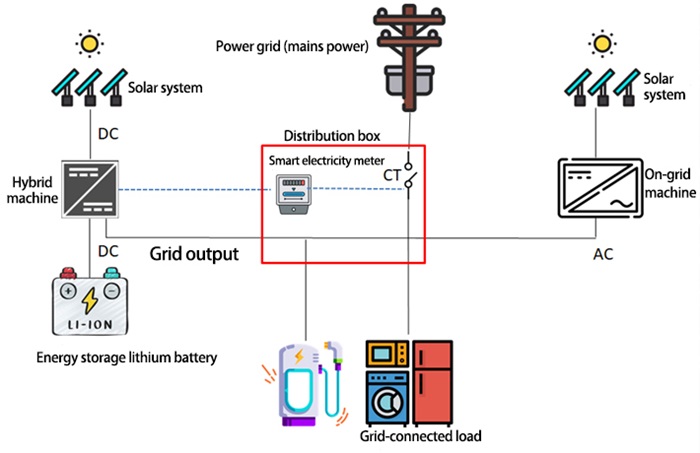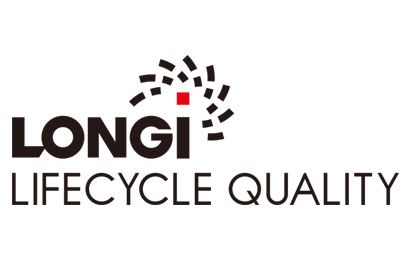Dyness Knowledge | DC coupled + AC coupled system
Power Generation
Dyness Knowledge | DC coupled + AC coupled system
Foreword
DC coupling and AC coupling systems are common energy conversion methods in new energy application scenarios. They have their advantages in practical application scenarios to meet different practical application needs. In the current photovoltaic energy storage system solutions, a "DC coupling + AC coupling system" solution has been derived according to requirements and demands.
Hybrid inverters are a new type of solar technology that combines the advantages of traditional solar inverters with the flexibility of battery inverters into a single hardware device. For new customers who want to install a solar power generation system with future upgrade and expansion capabilities, hybrid inverters are an emerging and trend-following solution (Solar). However, the expensive replacement cost of the overall system and the expensive hardware purchase and system modification costs of combining with the existing photovoltaic system (photovoltaic panel + grid-connected inverter) make existing customers in the new energy market eager for a more cost-effective solution compared to the integrated hybrid inverter. Therefore, the "DC coupling + AC coupling system" solution has emerged, providing a new way for existing customers in the market to enjoy clean energy.
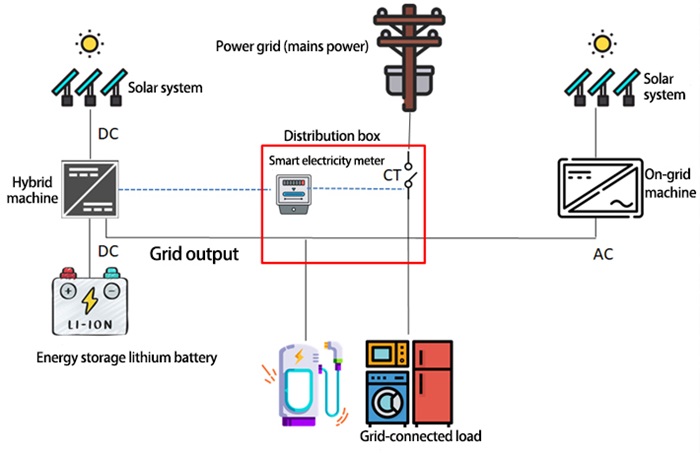
In the solution system, the hybrid DC-coupled photovoltaic energy storage system has the function of AC coupling, integrating the grid-connected system and the photovoltaic energy storage system through logical control. The photovoltaic inverter power generation can charge the battery through AC-DC conversion, realizing an overall "self-use" application mode.
The "DC+AC coupling system" achieves a certain balance between system cost and specific light/storage capacity requirements, and is suitable for the expansion and energy storage transformation of existing photovoltaic systems or the installation of new photovoltaic energy storage systems. The application scenario not only improves the photovoltaic self-consumption rate but also increases the utilization rate of the energy storage system. For example, 70% of the household AC load can be directly provided by the photovoltaic system, and the remaining 30% of the power load can be supplemented by the energy storage system.
(1)-1.jpg)
This kind of combination and matching method is not only highly flexible but also more "playable" than a simple coupling system. For example, the user is not very sensitive to the capacity of the energy storage battery system, so the user can choose a small-capacity energy storage battery to save money. If the customer's family has more electrical equipment and is willing to purchase a large-capacity energy storage battery to store the surplus power of photovoltaics to achieve the economic purpose of "shaving peaks and filling valleys", then the customer can purchase a large-capacity energy storage battery system. Or the customer's family newly purchased new energy vehicles added charging piles, and the family newly purchased a large number of high-power electrical equipment. The original photovoltaic system is not enough to support the power of the current electrical load. At this time, the user can not only expand the capacity of the photovoltaic system but also add an energy storage battery system to coordinate with the photovoltaic system to meet the "cutting" demand. peak filling valley" and ensure the stability and reliability of household electrical loads.
However, there are also some points of concern in this system, such as the realization of the anti-backflow scheme, load monitoring, and the waste of photovoltaic energy in off-grid applications. These problems are usually solved by:
Off-grid application solutions
When the photovoltaic inverter is running, the grid system serves as a stable voltage source to provide power for its normal operation. Therefore, in the off-grid operation scenario, the photovoltaic inverter cannot work normally. In the "DC coupling + AC coupling system", if you want to realize the normal operation of the photovoltaic inverter in the off-grid situation, you usually use the off-grid function of the energy storage inverter to simulate the voltage source (the current source is switched to Voltage source), to ensure the normal operation of the solar inverter.
Inverter manufacturers in order to realize the relationship between energy storage batteries, household/industrial and commercial loads, and the "supply and demand" of electricity in photovoltaic systems. Usually, a P/F control strategy is adopted to control the output of the solar inverter by adjusting the output frequency of the energy storage machine.
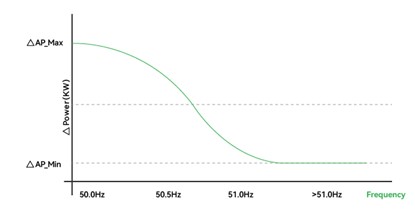
Note: "P" refers to power; "F" refers to frequency. The P/F control strategy ensures that the power supplied to the load remains stable even when the load changes, thereby achieving efficient and precise load control.
Backflow prevention scheme
In the application scenario of the system solution of a hybrid machine plus a grid-connected machine, to prevent backflow, it is necessary not only to control the photovoltaics intervened by the hybrid energy storage inverter but also to control the electric energy generated by the photovoltaic inverter. Generally, three control logic and methods commonly used in the market can achieve this purpose.
1. Direct communication between photovoltaic inverter and energy storage inverter. Generally, the energy storage inverter is used as the host for communication, and the photovoltaic inverter is controlled to systematically control the charging and discharging of the energy storage battery and load power supply.
2. Externally connect additional unified total control hardware. Use additional external control hardware devices as the overall control logic-brain of the entire energy storage system. However, this kind of input cost is relatively high, and special communication debugging is needed to achieve this purpose.
3. The photovoltaic inverter and energy storage inverter are controlled separately. This solution is relatively simple and crude and requires the anti-reflux thresholds to be consistent. In addition, there are uncontrollable differences in the response speed and data sampling accuracy of different models, which generally need to be verified by matching tests before being pushed into practice.
Load monitoring solution
The load monitoring scheme and the anti-backflow scheme are complementary to each other. The above three anti-backflow solutions can also realize the function of load monitoring.
Note: When the energy storage inverter (adding several CT detections) and the photovoltaic inverter (the same manufacturer is required for software monitoring and visualization and data processing) are controlled separately, it is usually realized by integrating data in the cloud or monitoring terminals load monitoring. Therefore, usually, it can only be realized by matching with inverters of the same brand.
Quotation
SolarPalmetto. (No date). What is a Hybrid Inverter? Retrieved: July 19, 2023, Source: Palmetto Solar Blog: https://palmetto.com/learning-center/blog/hybrid-inverter-for-solar -guide-pros-cons
Dyness Digital Energy Technology Co., LTD
WhatsApp: +86 181 3643 0896 Email: info@dyness-tech.com
Address: No.688, Liupu Road, Suzhou, Jiangsu China
Dyness community: https://www.facebook.com/groups/735600200902322


